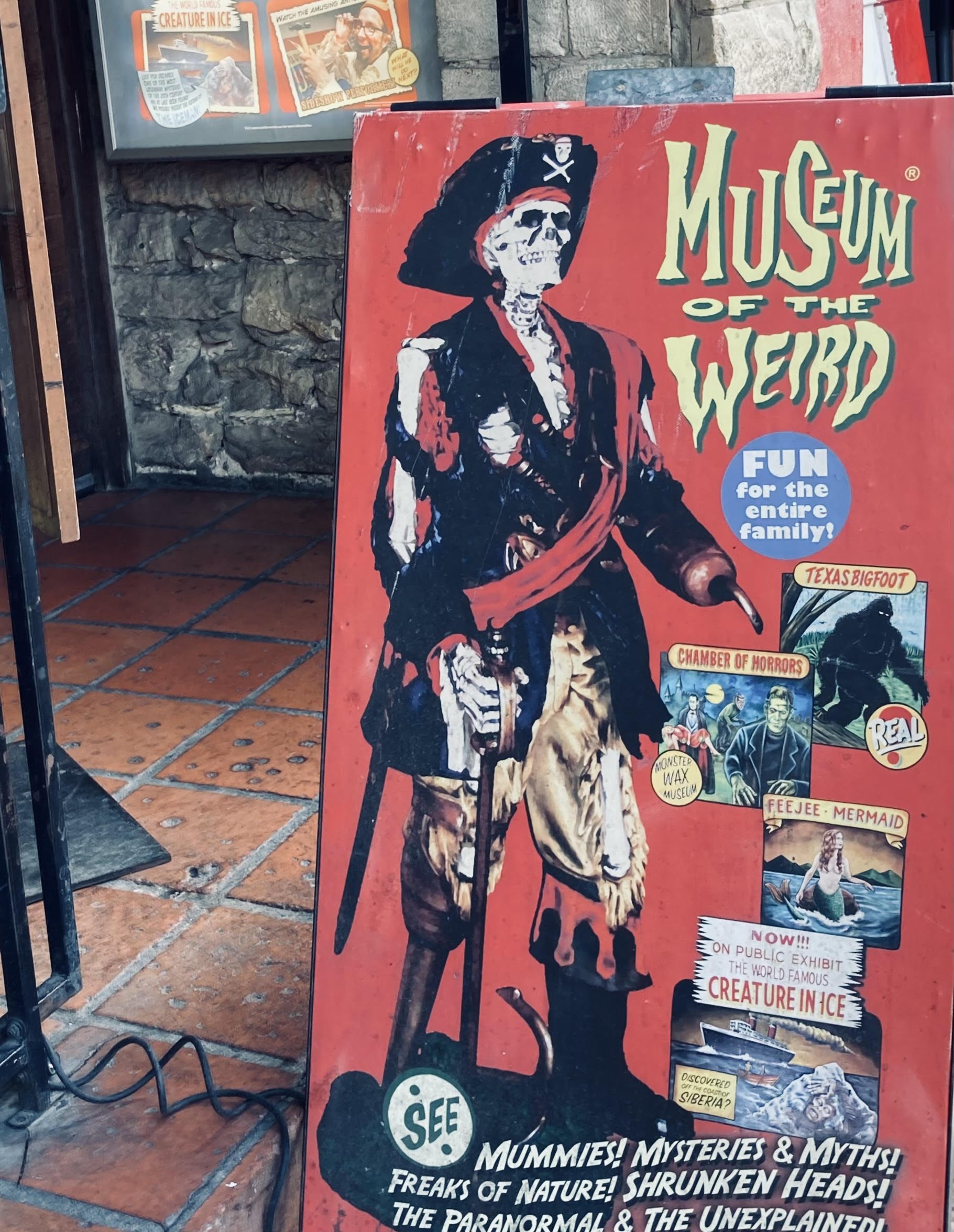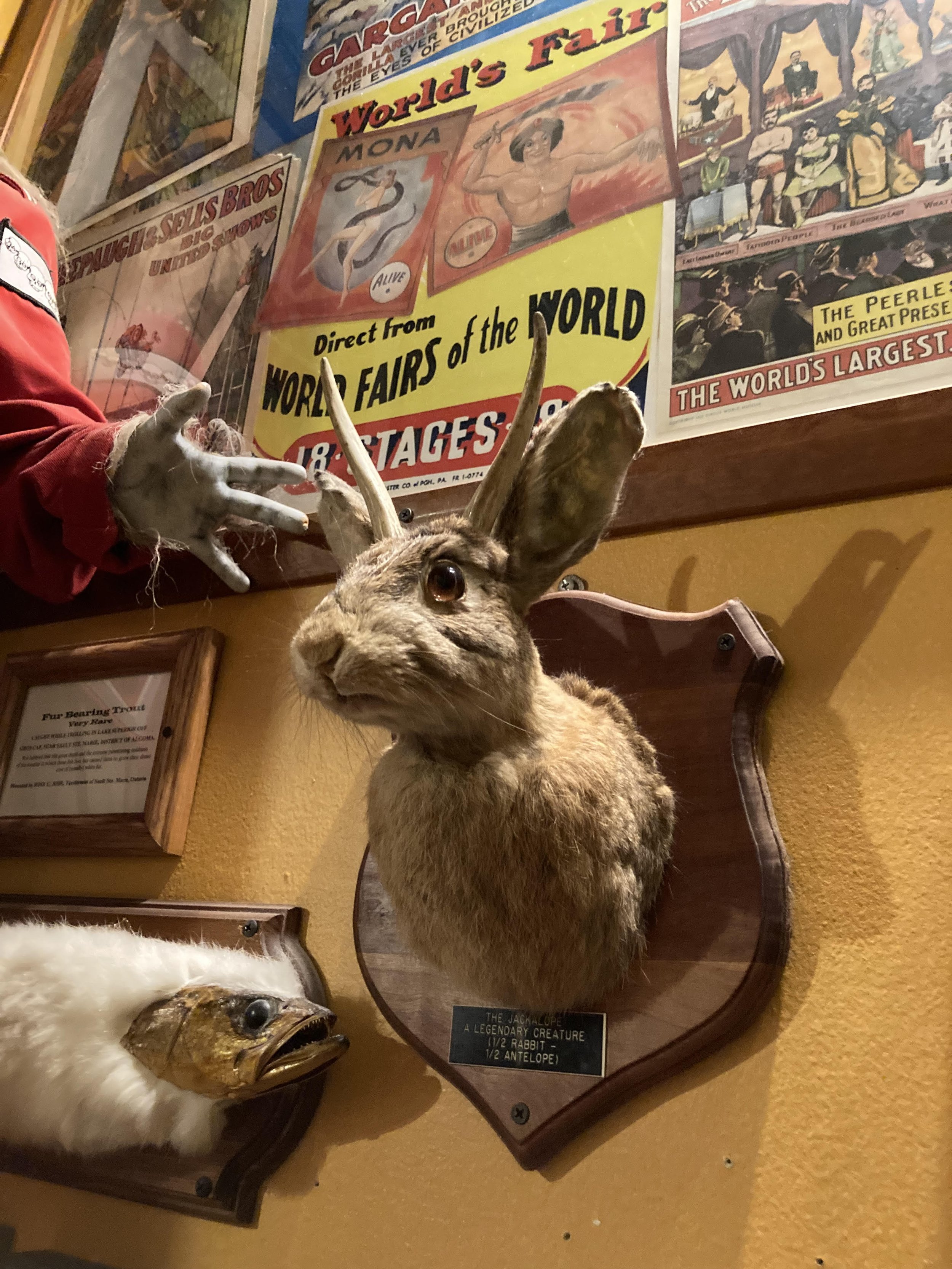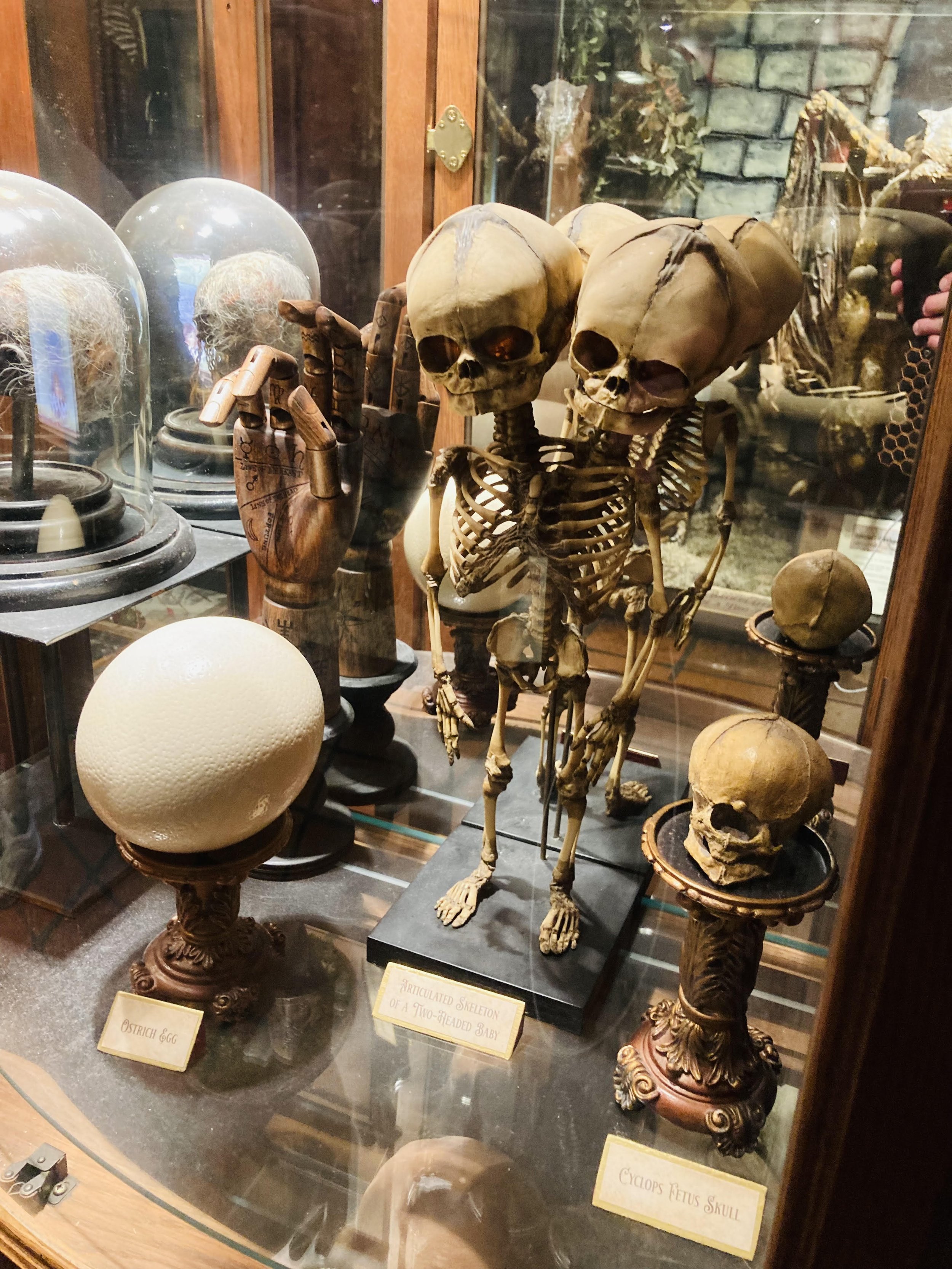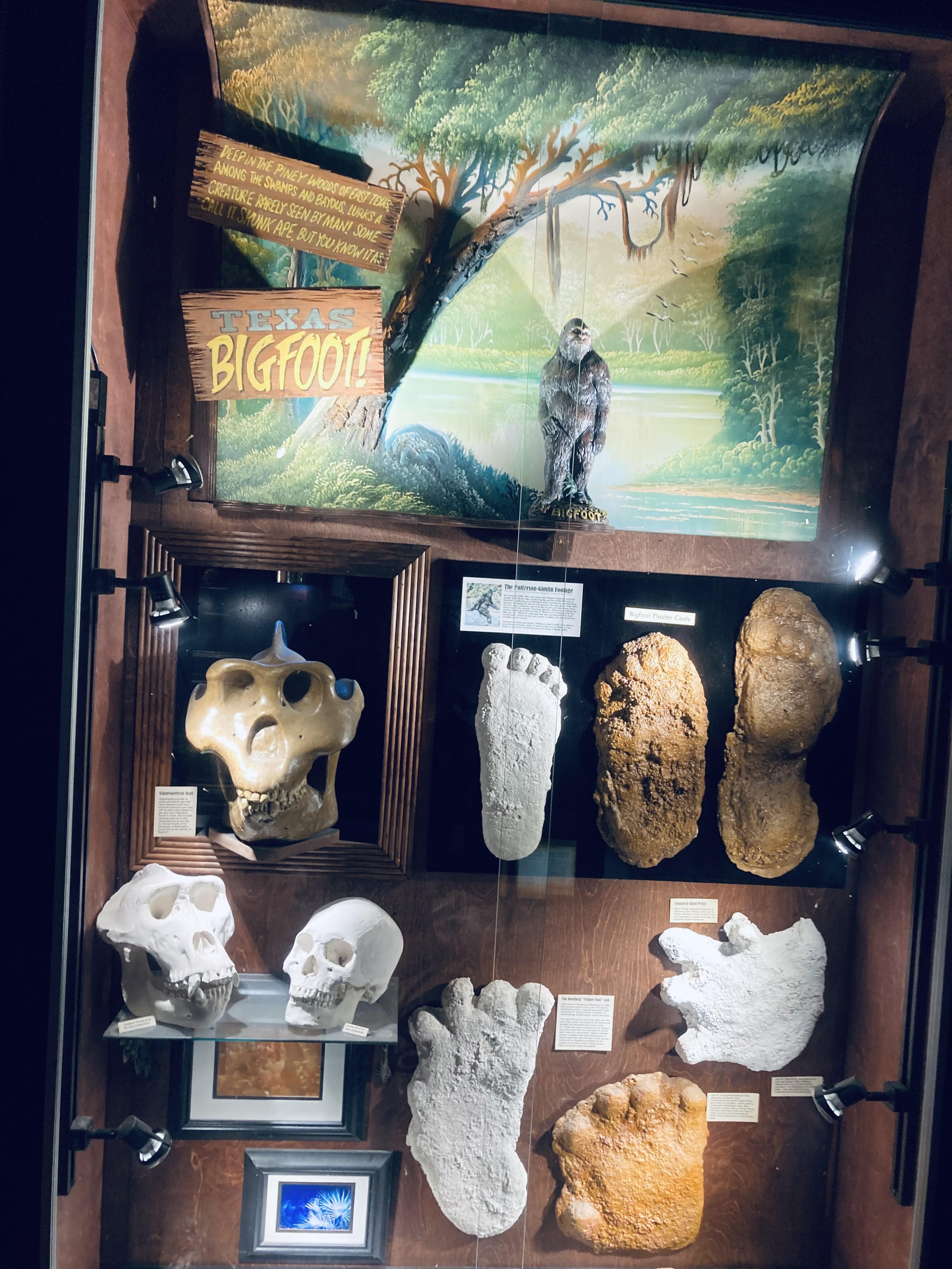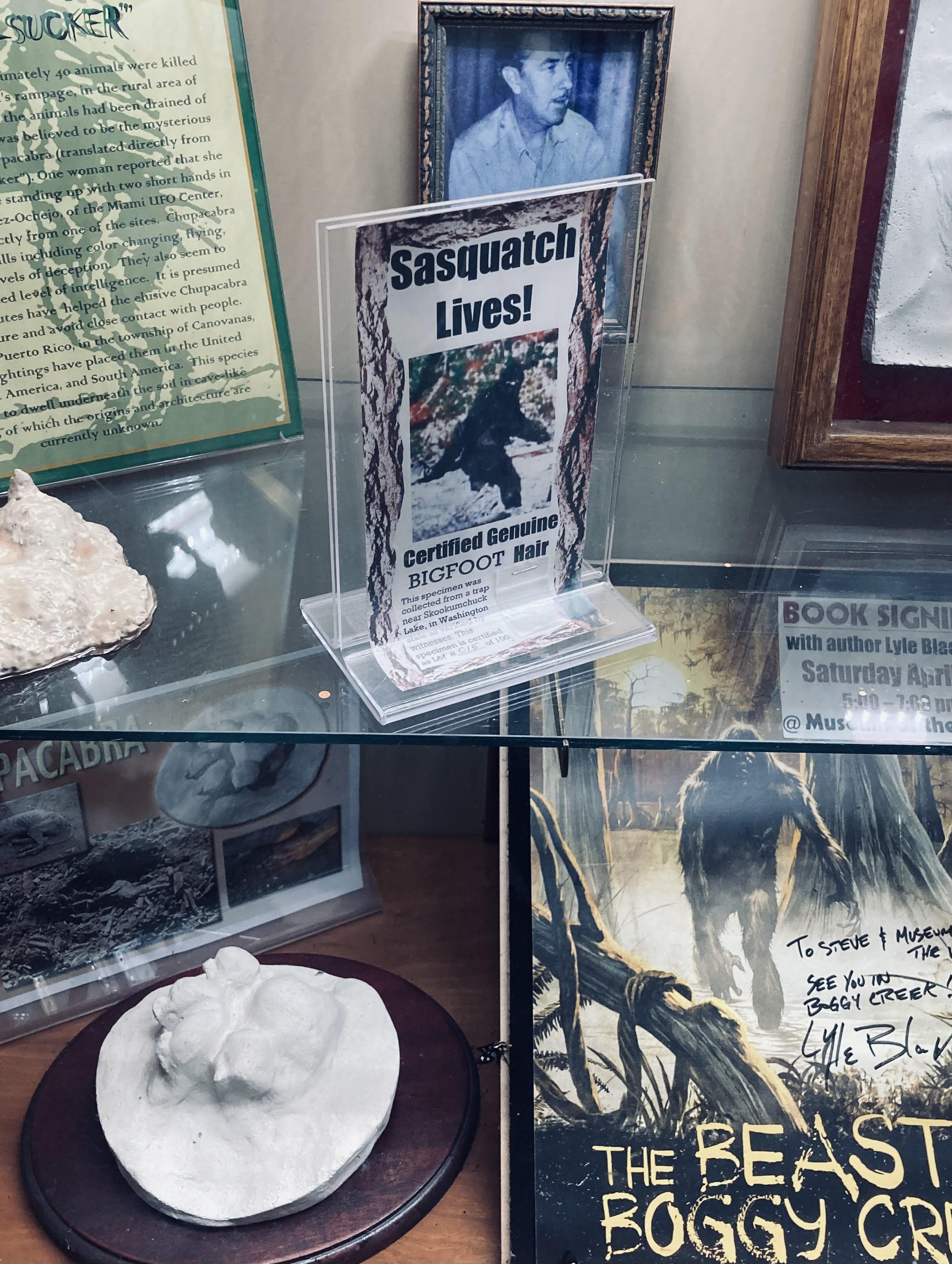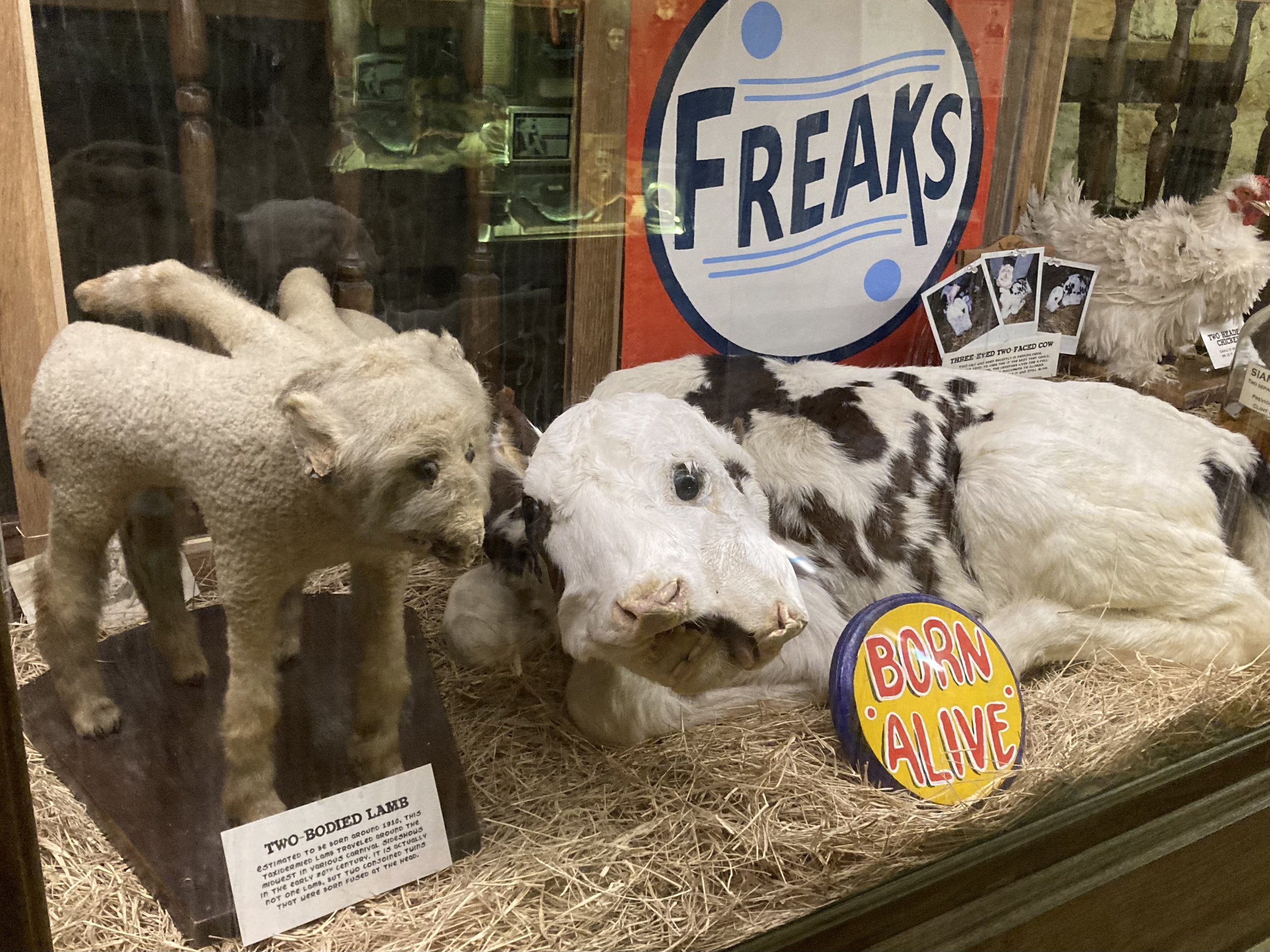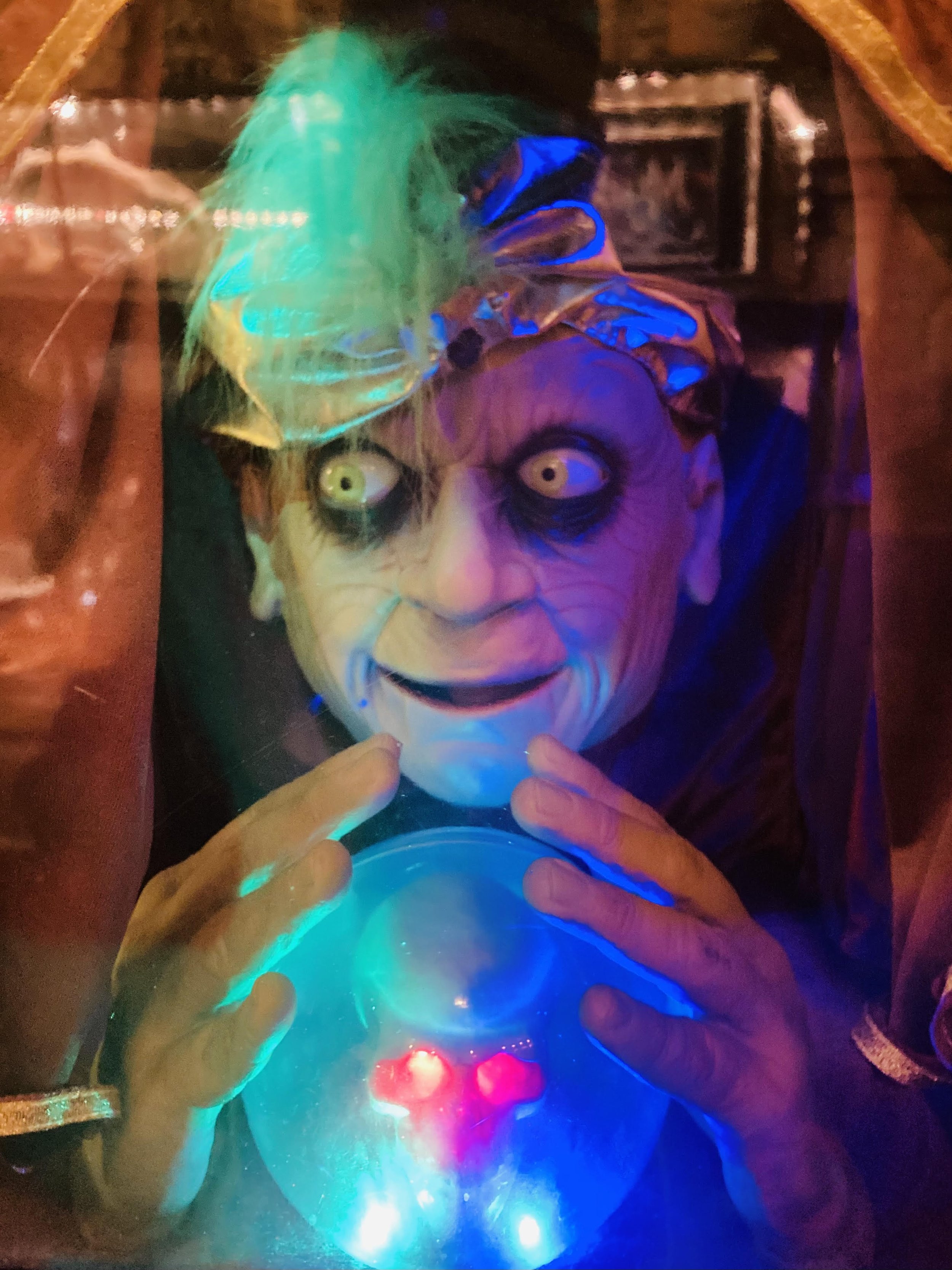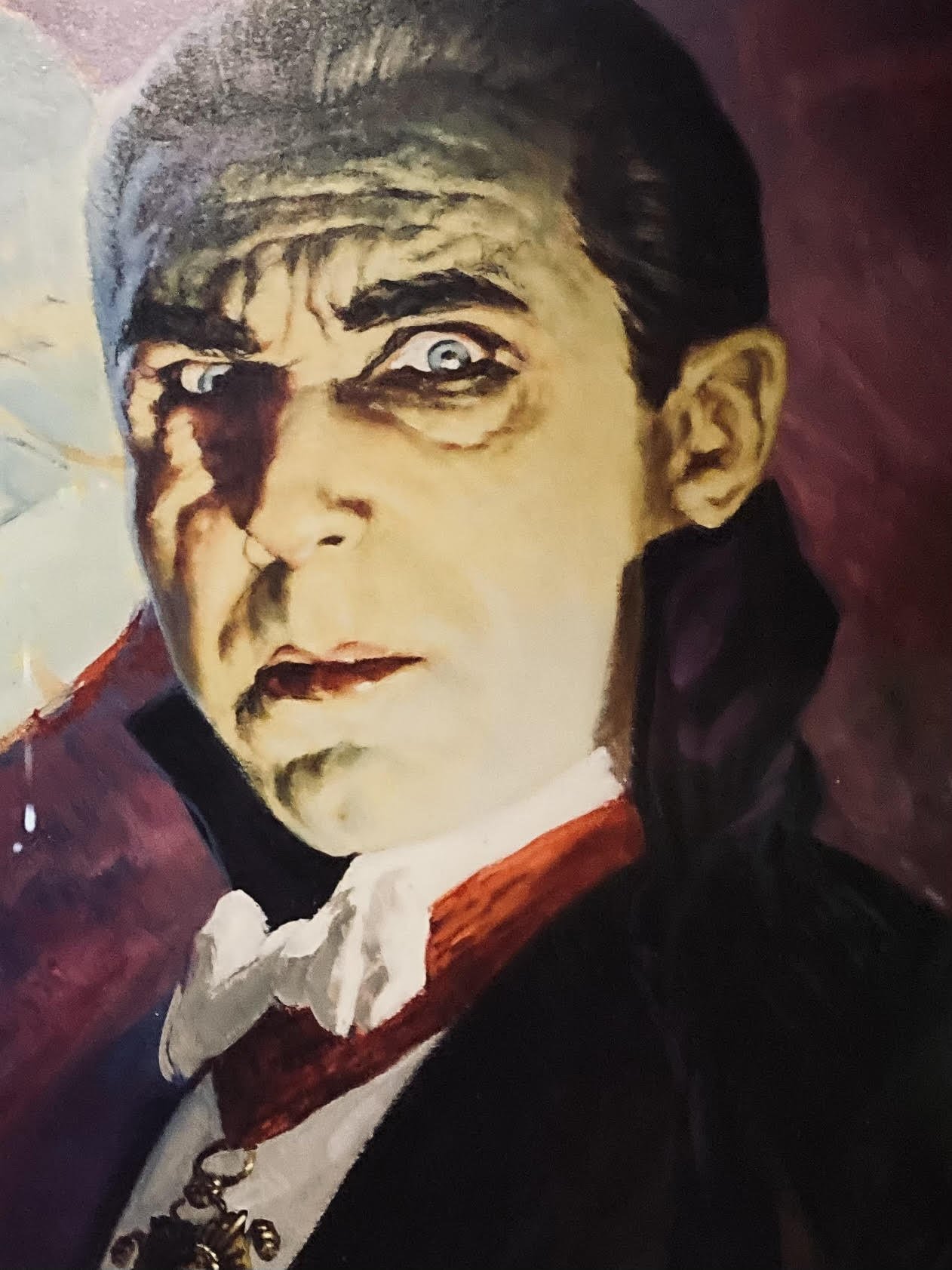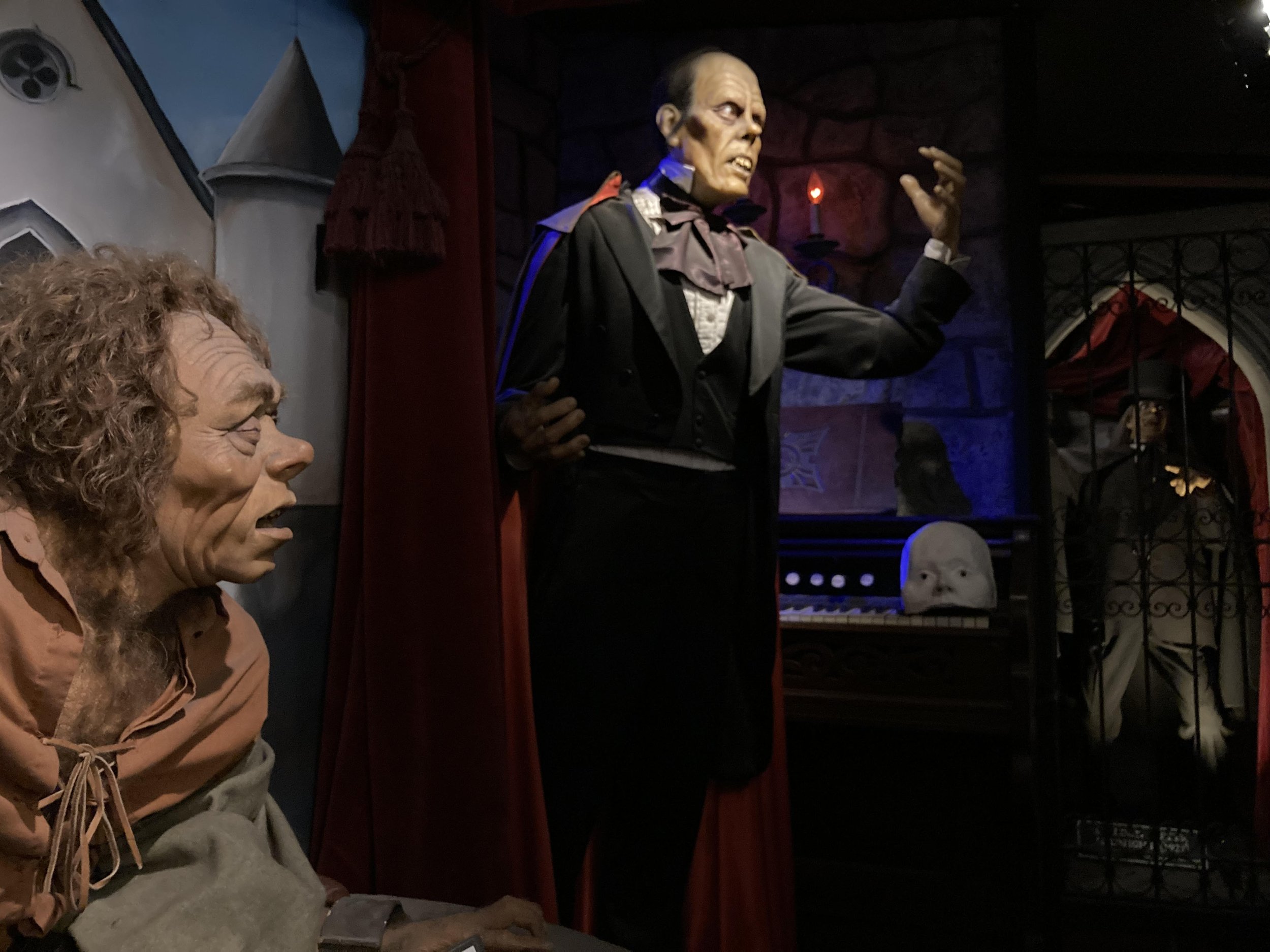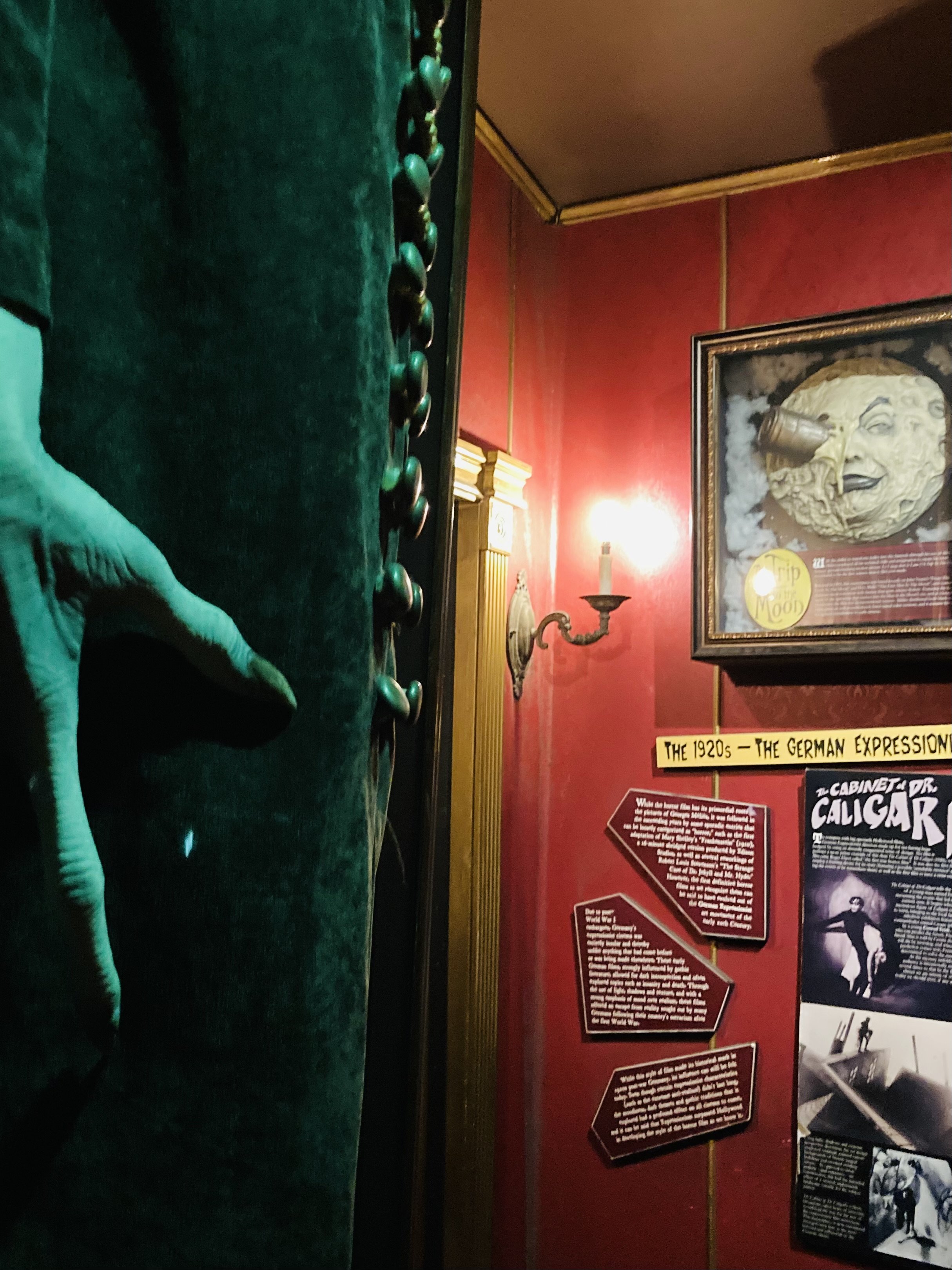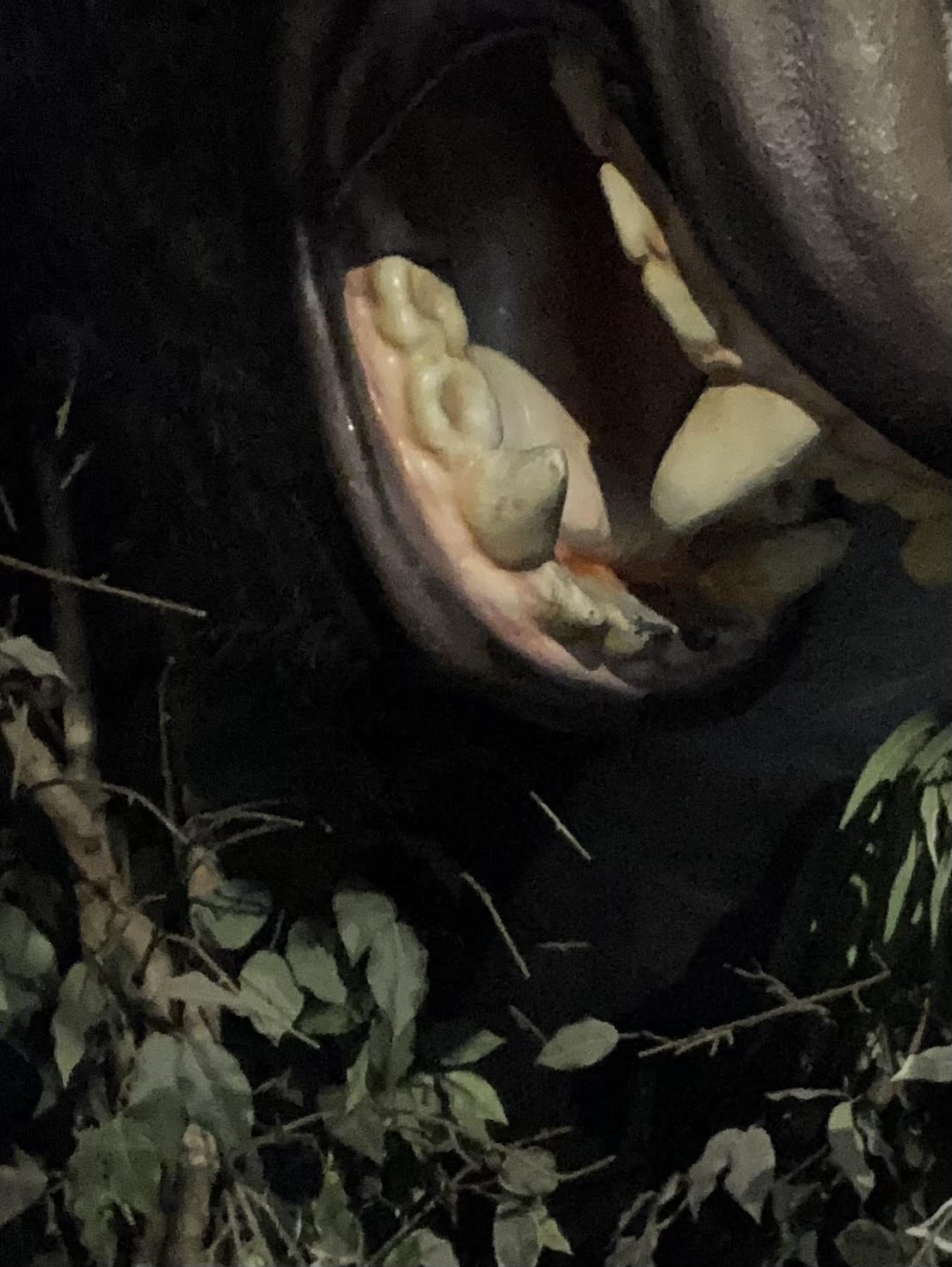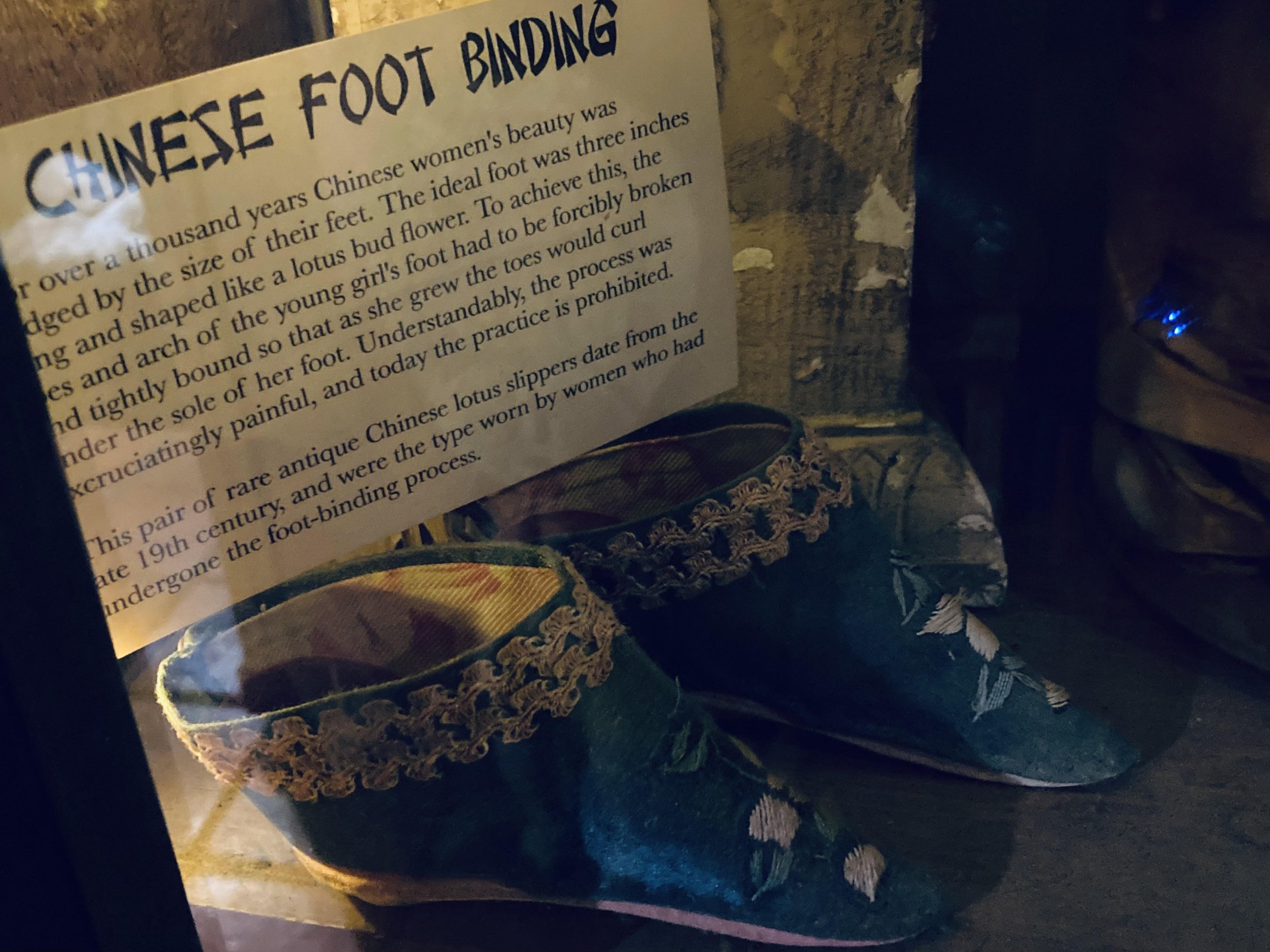It’s a circus out there. A bear-wrestling dictator doubles down on his invasion of country he says has been overrun with Nazis. A Supreme Court Justice-cum-theocrat cites thirteenth-century English law to justify overturning a fifty-year-old legal precedent. A British Prime Minister resigns his post while the Benny Hill theme song plays outside Parliament. Bizarre, ridiculous and just plain unsettling, these stories belong in Ripley’s Believe It Or Not rather than the daily news.
On days when I don’t know whether to laugh or cry about the state of the world, I think of Kurt Vonnegut who chose laughter over tears (there was less cleaning up to do afterward), watch Real Time with Bill Maher like it’s the last salvation and seek escapes where I can, like the Sixth Street Museum of Weird. I wandered into the place the day after July fourth. The holiday that hadn’t felt like a holiday; someone had opened fire on a Chicago Independence Day parade and rained on everyone else’s festivities.
I ducked inside, bought my ticket at the gift shop, and headed for museum entrance turnstile, which stood next to a swami encased inside a broken fortune telling machine. The kitsch was straight up old-school. Visitors—who could easily find freak show entertainment online—were only too happy to pay for a glimpse at past-tense weird. As one of the last American dime show-style attractions, the kind of entertainment the museum represents has become rare as a UFO sighting.
The first exhibit was of P.T. Barnum, whose wax likeness stood in the anteroom adjoining the narrow first-floor exhibit hall. In 2000, savvy local businesses took a tip from Barnum’s freak show playbook and made the slogan “Keep Austin Weird” part of the city’s hugely successful marketing campaign. Two other cities, Portland and Louisville, stole the slogan for themselves a few years later. Because human beings are curious and gullible. And because crazy—like the antler-wearing stuffed “jackalope” on the wall across from Barnum’s statue—always gets people’s attention.
The grotesque greeted me everywhere I looked. Shrunken heads stared blindly from inside glass cases, as did skeletons, grinning skulls, mummies and the frozen remains of a creature called the Ice Man. He was actually my favorite, less because he was the star attraction and more because he sat in a dark, refrigerated room that offered relief from the blistering Texas heat. A two-bodied lamb, two-headed chicken and a three-eyed calf had their own display in a small second floor room. Natural deviations in and of themselves, their forcibly preserved state brought to mind the undead creepiness of taxidermy shops.
The paranormal or otherwise unexplained also had their own corners in this strange little museum. On one wall, a photo exhibit of Austin’s Driskill Hotel told the story of murders, suicides and restless ghosts, like that of the hotel’s one-time cigar-chomping owner, Colonel Jesse Driskill. And further into the main gallery, past the skulls and skeletons and shrunken heads, an exhibit featuring plaster casts of feet and skulls argued for the existence of Sasquatch and a Texas Bigfoot.
I willingly suspended my disbelief. It didn’t matter if those shrunken heads were real or clever fakes. Everything was entertainment. As if to emphasize the point, the museum also had a small third-floor gallery dedicated to classic horror films and film stars. Images or wax figures—like Bela Lugosi’s Dracula, Boris Karloff’s Frankenstein and Lon Chaney’s Quasimodo—filled a dark slightly stuffy room along with memorabilia from the silent era horror films like The Cabinet of Dr. Caligari and Nosferatu. There were even mock-ups of King Kong’s killer hands and man-eating mouth.
Walking out of that final exhibit and down the stairs to the exit, I realized that although all the displays inevitably gestured to dark unknowns in both humans and the world, nothing frightened or shocked me. Like all of the museum’s many visitors, I’d seen all of these artifacts before or had known they existed through popular culture. In the controlled glass-boxed world of the museum, they could me no harm. Until I saw the slippers, tiny as doll shoes.
I’d missed them my first time through the main gallery. A sign said they’d been made in the late nineteenth century and been destined for—and perhaps worn by—a full-grown flesh-and-blood Chinese woman, likely of the upper classes. She’d had her feet broken and bound sometime between ages 4 and 9 and told that each foot would eventually become lovely as a golden lotus and make her irresistible to wealthy suitors. Too young to fully understand the autonomy she was being asked to sacrifice, she nodded. Maybe she resisted for a time: leaving the things of childhood behind, like running in gardens or fields with playmates was difficult. What awaited beyond pain, deformity and damage that would last for the rest of her life was the beautiful mystery of womanhood.
I imagined the shoe’s owner as a ghost, one among many that haunted a quaint museum I’d only visited because it was summer, because I had time, because I needed a break. What isn’t dead and still rises like a zombie from on old Hollywood horror film, is the brute stupidity behind to that thousand-year-old tradition that didn’t end until the mid-twentieth century. The same stupidity that had just stripped American women of rights to their own bodies.
I hurried out the exit, the skin on my back suddenly clammy. I’d welcomed the chance to be distracted. But the amusement had been a fraud. Reality had still found me even as I’d fled, forcing me to confront a real-life carnival of chaos I’d paid to forget.
